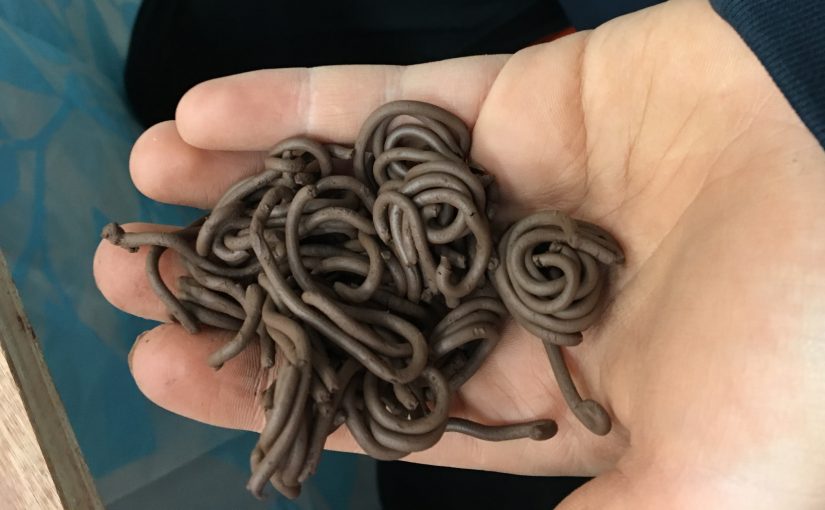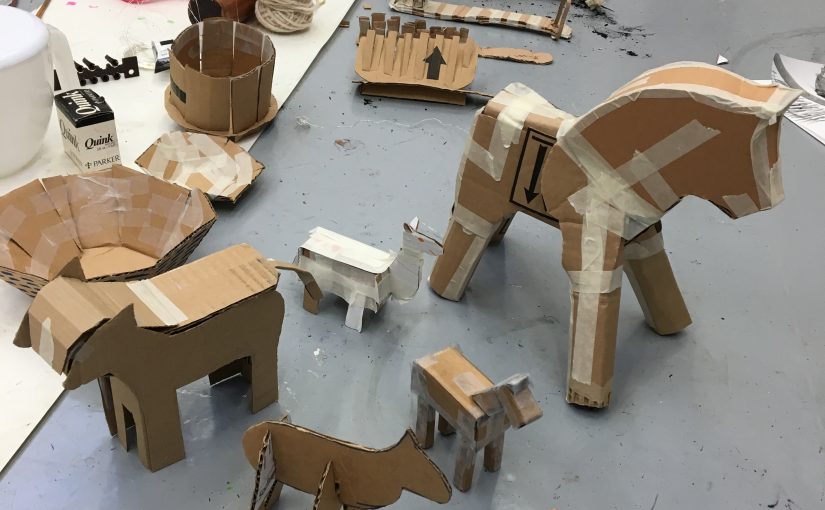Today’s session was all about exploring the possibilities of clay. With very little guidance the group began to play about with a lump of clay. Instinctively members began to build, extend, grow, impress, indent, impress, loop, mold, press, pummel, pinch, pull, poke, roll, stretch, stack, stroke, score, scrape, thump, topple and smooth the clay as soon as it was put down in front of them.
To begin with we worked with no tools except our hands, later introducing found tools from the kitchen drawer. We also thought about how we might create small units: coils, containers, cones, cylinders, donuts, letters, leaves, pebbles, strips, sticks, squares, spheres and anything else the group could conjure up. We explored the clay’s material properties with no notion of what we might make.
Mid-way through the morning we looked at some images of how clay is used in our every day lives, from tea cups, to toilets, sewer pipes and bricks. We also looked at artists who push the material possibilities of clay, thinking not just about making representation objects but how what we make can reflect both the material and the physical processes of making.
We worked focusing on the tactile exploration, thinking more about the experience than outcomes and enjoying the process. We created some fantastic experiments and we wait to see if they survived the kiln, as they are going to be fired over the Easter break.
Take a look at the pinterest page for more inspiration
https://www.pinterest.co.uk/vanessarolf/playing-with-clay/
The brilliant ceramicist Nao Matsunaga will be exhibiting at the Crafts Study Centre in Farnham from 3rd April 2018 – do go and see the show if you can.
http://www.csc.uca.ac.uk/new-events/2018/4/3/70pv9umzst87dqqm9f0v5fim8j65u5


